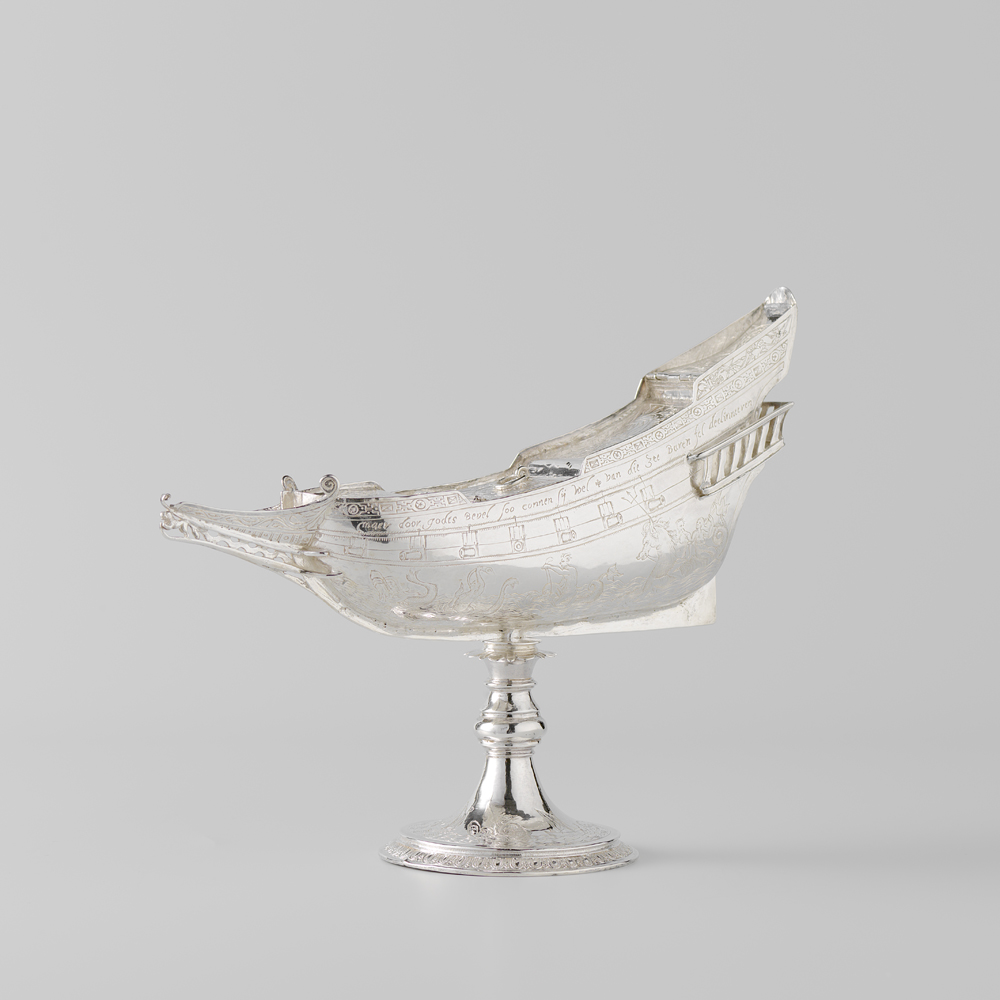Stop 13 - Spice box
Spice box. Middleburg, The Netherlands, about 1600, silver, 17.6x 24 cm. Rijksmuseum BK-NM-4313
This spice box in the shape of a boat, made in 1602 and named after the Dutch ship Mauritius, is a precious piece of silver tableware designed to show off the equally expensive and rare spices from the Indonesian Island of Bandan, then known as Spice Islands (Moluccas). The spices – for example cloves, pepper and nutmeg were hidden in secret compartments inside the spice boat and were regarded to be as valuable as jewels by Europeans in the early modern period.
The silver spice box shows Neptune with Amphitrite, the most beautiful of all mermaids, riding on a sea serpent with Neptune holding his trident. Other mermen in front of him are fighting dangerous sea serpents - a reminder of perils of the Indian Ocean which caused many shipwrecks. This reminder of imminent death and loss on sea journeys is reflected in the Dutch inscription above Neptune which reads in translation: "When maritime commerce flourishes, thanks to God's blessings, it feeds many mouths and brings triumph to our country, but the sea can put up strong opposition if it is God's will."
That the dangers of Dutch sea voyages did not only come from the sea and its imagined monsters, but also from fellow humans, becomes clear when we look at the row of canons depicted above the inscription: the Mauritius was first of all a warship.
The Mauritius was named of Maurits of Orange-Nassau, who was the son of William the Silent, Prince of Orange, who had led the Dutch Republic into political independence from their Spanish overlords just a few years earlier. You can also see the Nassau heraldic sign, a lion, on the front of this spice boat. Before the Dutch East India Company was even founded, Maurits of Orange–Nassau commissioned a small fleet to sail to the Spice Islands, then under Spanish rule. In 1601 the only remaining ship, the Mauritius, returned to Amsterdam in triumph after having defeated the Spanish.
The greed for quick profit drove the Dutch to take extraordinary violent measures against the local population on the Bandan Islands. The Dutch took the island by force and in order to prevent local resistance to their rule they ordered a massacre on the local population: all males over the age of 15 were beheaded, many more died in the following years of enforced labour on Dutch plantations of nutmeg. In order to secure the Dutch monopoly over nutmeg, the most profitable of all spices, no local was allowed to grow nutmeg trees. Finally, a French sailor managed to smuggle secretly some nutmeg tree seedlings to French colonies in the Caribbean and thus the Dutch monopoly over the spice trade was broken.


- Next Stop
-

Stop 14 - Spice Map
next